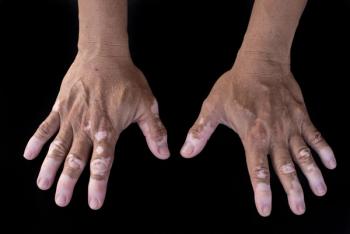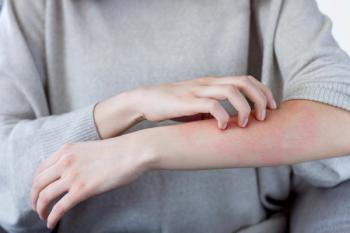
Thyroid Abnormalities Rare Among Children with Vitiligo, Study Finds
The search for the causes of vitiligo continues. The findings in this study stand in contrast to another one conducted in eastern China that showed a high percentage of children with vitiligo had thyroid abnormalities.
In contrast to previous research, a study conducted at one of the largest children’s hospitals in China showed that only a small percentage of children with vitiligo had abnormal thyroid function.
Results reported in the
The researchers said that possible explanation for the difference between their results and the previous study in eastern China is that the children in their study were younger and that thyroid abnormalities develop later. Dai and colleagues also mentioned issues with study design and selection bias.
This study was conducted at the Children’s Hospital of Fudan University, which the authors said is the largest in eastern China. It was a retrospective study that included a total of 244 children seen at the hospital’s vitiligo clinic between September 2019 and April 2021.
There are many theories about what causes vitiligo, ranging from genetic (25% to 50% of people with vitiligo have an affected relative) to autoimmunity to neuronal (neural endings secreting a neurochemical mediator that is toxic to melanocytes). This study was yet another attempt to shed some light on the subject. To further complicate matters, as Dai and colleagues mention, some research that childhood vitiligo might be a distinct clinical entity.
In this study, all the patients were younger than 18 and the average age of onset was 5.3 years. which the researchers said is younger than the age of onset of previous studies.
The Fudan University researchers also looked at atopy (allergies) and autoimmune disease. About 1 in 3 children in the study (73 out of 244) had at least one atopic disorder, including atopic dermatitis (31 of 244, or 12.7%) and atopic rhinitis (50 of 244, or 20.5%).
Roughly the same proportion of the children in the study (52 of the 157 who were tested) had elevated levels of immunoglobulin E (IgE), the antibodies that are overproduced in people with allergies that lead to allergy symptoms.
Twenty (8.2%) of the 244 children in the study had been diagnosed as having an autoimmune disorder, a group that included eight children with thyroid disorder and four with alopecia areata. The researchers also found an inverse relationship between autoimmunity and IgE levels.
These findings were published in the September 2022 issue of the International Journal of Dermatology. They were posted earlier online in March 2022.
Newsletter
Get the latest industry news, event updates, and more from Managed healthcare Executive.




















































